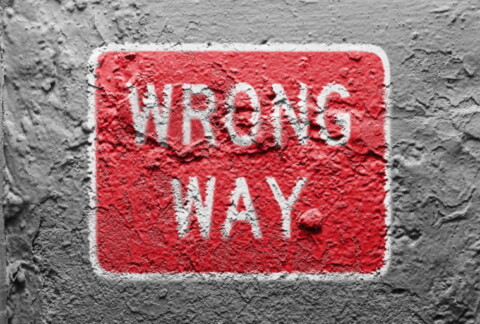So your website text content got copied?
Unless interesting and engaging diction naturally flows from your fingertips, writing website text content can be a real chore.
Especially as you really aren’t sure whether anyone is going to read it. After all your hard work as well! (I’m sure that many of you know exactly what I mean.) Yes, it takes a lot of time, thought and self-discipline to sit there and type.
But then there are ‘those’ who really can’t be bothered typing up a single word. They find it much so much easier to pop onto someone’s website, copy large chunks of text, and post it up onto their own website. Not a second thought, or care in the world, for the time you spent creating it. And the evil deed is done and dusted without you even knowing. By the way, I really hope that you aren’t one of those people and slowly starting to go red…
Copying someone else’s text content causes problems not just for their website, but also yours. And it doesn’t matter where geographically the text was copied from and where it is posted. Google’s clever software will find it, cross reference it and tag it as duplicated content. The next thing you know, you as the victim of text theft will notice wobbles and tumbling’s in your website’s search rankings. And you probably you won’t understand why!
Website text content copying is crazily common and has happened to our company what seems like a zillion times over the many years we’ve been in business. We’ll suddenly notice a dip in the rankings of some of our key words, and the alarm bells will start to ring. Luckily, we have systems in place that can quickly identify exactly what website text content has been stolen from us, and where the villains have posted it on their own websites.
If this all sounds too close to home, and you think that you also may be the victim of copyright theft here’s some advice on what we would do….
Set up an account with an online plagiarism detection service like Copyscape. This is a pay as you go service where you can check whether any areas of your website’s text content have been copied. Within minutes of you instructing Copyscape, you will be provided with a report showing exactly which website’s have copied your text content. The copied text content will be clearly highlighted for you.
Next up it’s time to contact the content thief. We have found that reaching out directly by phone and then following up by email works well most of the time. Make it very clear that they have breached the Digital Millennium Copyright Act, and that if they do not remove the copied content within 24 hours for example, you will file a complaint with Google. When emailing them you can also include the Copyscape URLs that highlight the copied work.
We have found that the majority of content thieves will remove the offending content quite rapidly. You can of course check progress by running a new report in Copyscape. If you notice that someone continues to display the copied content, you can move to the next stage where you can request Google to remove the content from their search results.
To ask for Google’s help, you will need to use Google Support – Legal Help. If you type this into Google, you’ll find a link which when clicked on takes you through a series of questions and then a final form to complete. Just to point out, this is a formal request you will be making, so please make sure that you are comfortable completing all fields in the form before submitting.
It can take some time, but there is a dashboard where you can view whether Google has accepted or rejected your request. If Google needs more clarification on your request, they will email you directly. If your request has been rejected, this may be because Google couldn’t find the offending text; in this case perhaps the person has already removed the copied text.
It’s your website content and you worked hard to create it. Be mindful there are people out there that will steal it from you, and it WILL impact your search results!


